Naksan Beach (낙산해수욕장)
14.3Km 2024-12-27
59 Haemaji-gil, Yangyang-gun, Gangwon-do
+82-33-670-2518
Naksan Beach is one of the most famous beaches in Yangyang, located in Joseon-ri, Yangyang-eup, Yangyang-gun, Gangwon-do. Since its opening in 1963, it has attracted more than 1 million visitors each year, its reputation being rivaled only by the Gyeongpodae Beach on the east coast of Korea. The 4 kilometer-long sand beach contrasts magnificently with the lush pine trees of the area. The water is less than 1.5 meter deep, making it a good place for all ages. Naksanhang Port marks one end of the beach, behind which Naksan Mountain, the location of Naksansa Temple, can be found. The other end has a lake formed at the delta of Namdaecheon Stream, which originates from Seoraksan Mountain. Many cafes, convenience stores, restaurants, and accommodations cater to the needs of the visitors. The beach sees considerable traffic in winter as well, when it serves as a popular venue for sunrise-watching, particularly for the New Year’s Day festival.
Jinburyeong Heulli Village (진부령 흘리마을)
14.4Km 2025-01-17
185 Heulli-gil, Ganseong-eup, Goseong-gun, Gangwon-do
Jinburyeong Heulli Village, situated near Jinburyeong Pass, is known for its long winters, lasting up for half a year. As a result, the village cultivates highland crops such as chicory and bell peppers and operates pollack-drying fields. Visitors can purchase locally produced wild vegetables, corn, potatoes, medicinal herbs, and honey, or participate in a bell pepper-picking experience. The village is also popular for its local dishes, especially those featuring chicken.
On the Button (온더버튼)
14.6Km 2024-12-27
On the Button is known for its view overlooking Munamhaebyeon Beach. The cafe’s facade features a window wall that brings the beach into view. The parking lot is located at the back of the cafe, so visitors won’t have to worry about cars blocking the view. With its chic interior and space, the cafe is also popular for photography. All beverages at On the Button are served in reusable cups. Lids are provided upon request. The second floor is a rooftop space. Children are prohibited from accessing the space due to safety reasons. The cafe serves a wide range of menu items, from Latte Verde to Summer Latte, Marron Latte, Cafe Americano, Latte, and Einspanner. Nearby tourist sites include Cheonhakjeong Pavilion, Baekdo Beach, and Gyoamri Beach.
Deungbul Garden (등불가든)
14.8Km 2024-02-16
23 Powolladeul-gil, Yangyang-eup, Yangyang-gun, Gangwon-do
Located near Naksanhaebyeon Beach, Deungbul Garden specializes in Korean beef and pine mushroom dishes. Its signature dishes are hanu gui (grilled Korean beef) and songibeoseot jeongol (pine mushroom hot pot). The restaurant prides itself on serving tender and juicy Korean beef, which pairs exceptionally well with the pine mushrooms, a regional specialty known for their superior flavor, especially when grilled with the beef. Pine mushrooms, named for their growth under pine trees and their pinecone-like aroma, are celebrated for their fragrance, scent, and texture, making them a premier ingredient in Korean cuisine. The menu also features other delectable options like songibeoseot bulgogi (pine mushroom and bulgogi), yukhoe (beef tartare), and kongnamul doenjang jjigae (bean sprout soybean paste jjigae).
Deungbul Garden (등불가든)
14.8Km 2025-01-23
23 Powolladeul-gil, Yangyang-eup, Yangyang-gun, Gangwon-do
This restaurant serves the delectable combination of pine mushrooms and Yangyang Korean beef. Every fall, you can enjoy grilled natural pine mushrooms with Korean beef special cuts and rib eye. Note that while the meat is served throughout the year, pine mushrooms are only offered when they can be harvested. Other popular dishes include Korean beef bulgogi with pine mushrooms and hot pot. American pop singer and producer Kanye West once visited this restaurant.
Baekdohaebyeon Beach (백도해변)
15.1Km 2025-10-23
78 Baekdohaebyeon-gil, Jugwang-myeon, Goseong-gun, Gangwon-do
Baekdo Beach is a quiet, white sandy beach located north of Sokcho. The area around the beach features splendid natural landscapes including unique rock formations and lush forests of pine trees. The beach is in a crescent shape, with a red lighthouse standing on the righthand point. The shallow and clean waters make this popular among families.
Ocean Valley Resort (오션벨리리조트)
15.2Km 2025-03-16
127-30, Ilchul-ro, Yangyang-gun, Gangwon-do
+82-33-672-4200
Ocean Valley Resort is located on the sandy shore of Naksan Beach staring out at the clean blue waters of the East Sea. The resort is the closest accommodation to the ocean in the nation. Since its opening in 2001, the resort has continued to strive to provide the best service in order for customers to have an unforgettable experience. The resort is open all year long, allowing guests to enjoy a range of activities like Naksan Beach in the summer to skiing in the winter.
There are many attractions close to the resort including Naksansa Temple, Cheoksan Hot Springs, Osaek Mineral Spring, and Unification Observatory. Guests can also enjoy a wide range of leisure sports like sea fishing, boating, water skiing and golf. Ocean Valley Resort is an environmentally conscious resort that uses solar power to cover its energy needs.
Manhae Village (만해마을)
15.4Km 2021-07-29
91, Manhae-ro, Inje-gun, Gangwon-do
+82-33-462-2303
Manhae Village was established as a training center and memorial hall for national activist Monk Manhae Han Yongun, revered for his literary and philosophical inspiration, as well as his devotion to the nation and Korean people during the Democracy Movement.
Seorojae (서로재)
16.1Km 2025-10-29
118 Bongsudae-gil, Jugwang-myeon, Goseong-gun, Gangwon-do
Seorojae is a beautiful accommodation with a name meaning "house which greets the morning dew." Guests can relax in nature, enjoying the breeze blowing through the pine forest, and listen to the birds chirping in the trees while relaxing in the garden or using the outdoor bath.
Seoraksan National Park (Southern Section) (설악산국립공원 (남설악))
16.6Km 2024-04-02
801 Seorak-ro, Yangyang-gun, Gangwon-do
Seoraksan Mountain, the highest amid the Taebaek Mountain Range, boasts beautiful landscape and scenery all year round. To the east of Hangyeryeong and Misiryeong Passes is classified as the outer section ("Oeseorak"), to the west is the inner section ("Naeseorak"); and to the south of Hangyeryeong Pass as the southern section ("Namseorak").
The southern section is famous for its mineral water, hot springs, and waterfalls including Yongsopokpo, Sibipokpo, and Yeosinpokpo Falls. Jeongbongsan Mountain (1,424.2 meters) is also included in the area. There are also several different hiking courses varying in distance and duration.
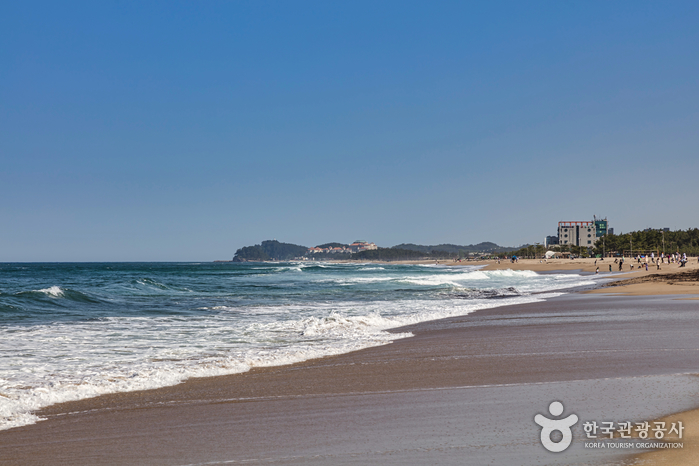
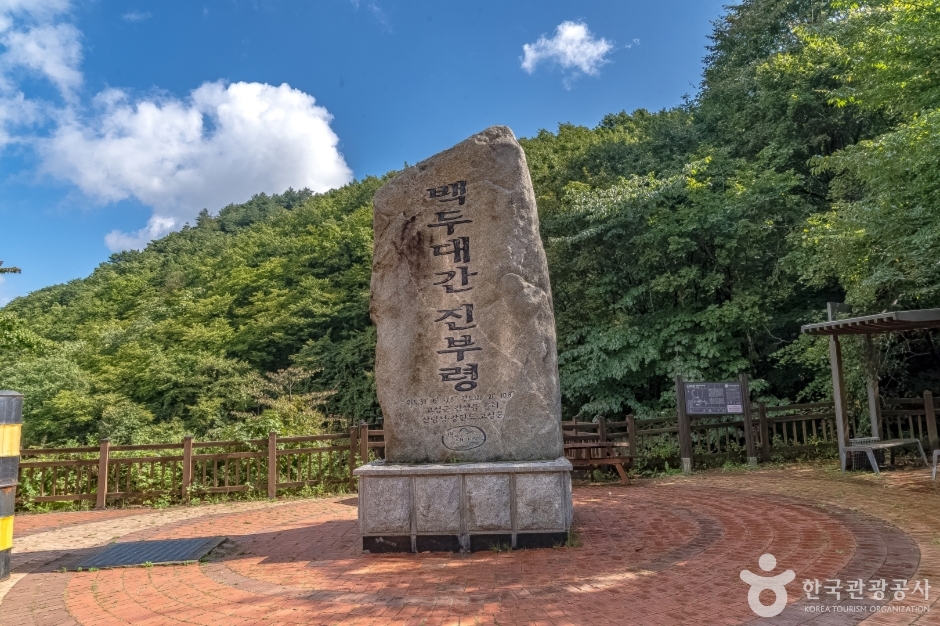
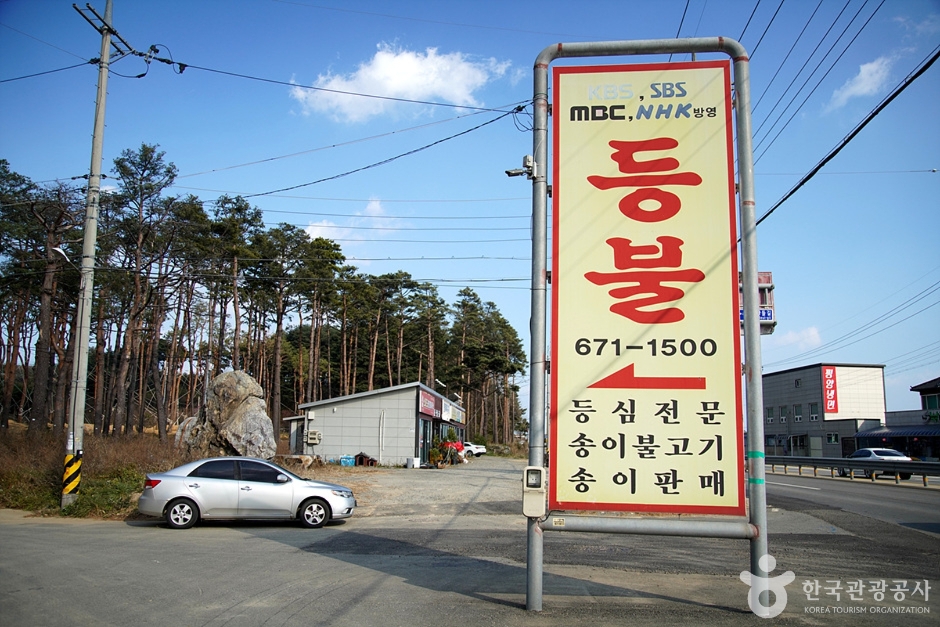

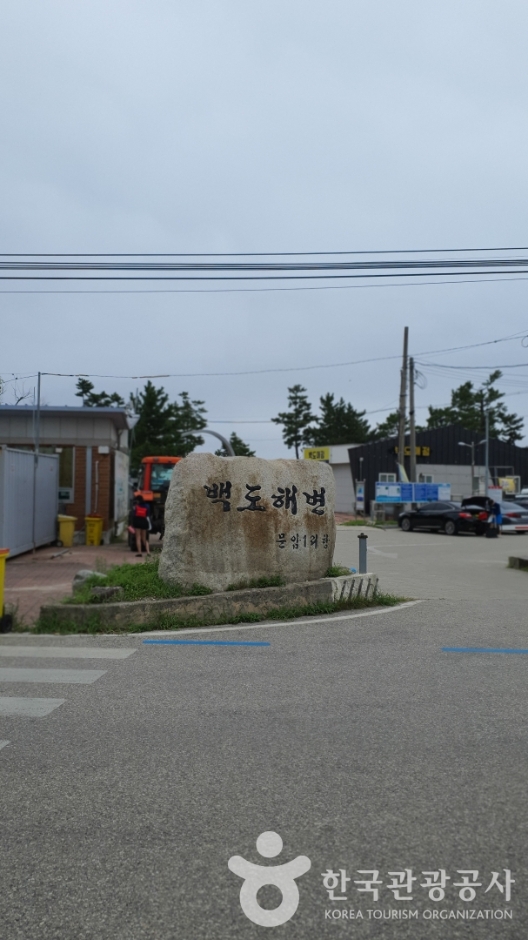
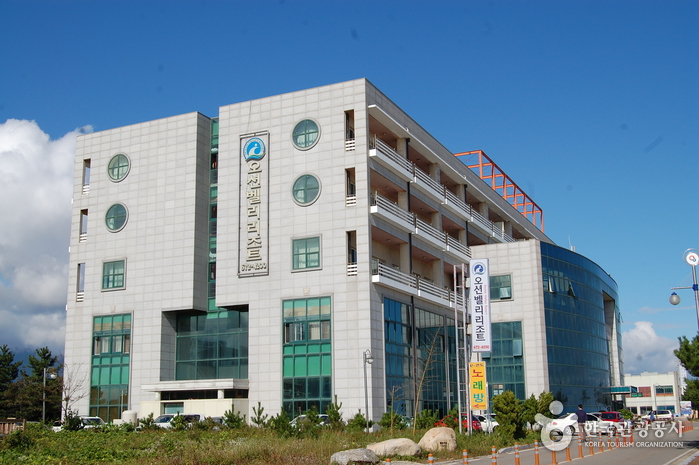
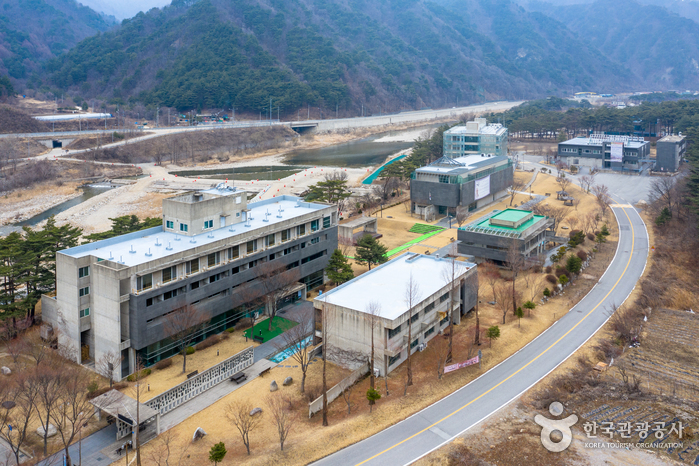
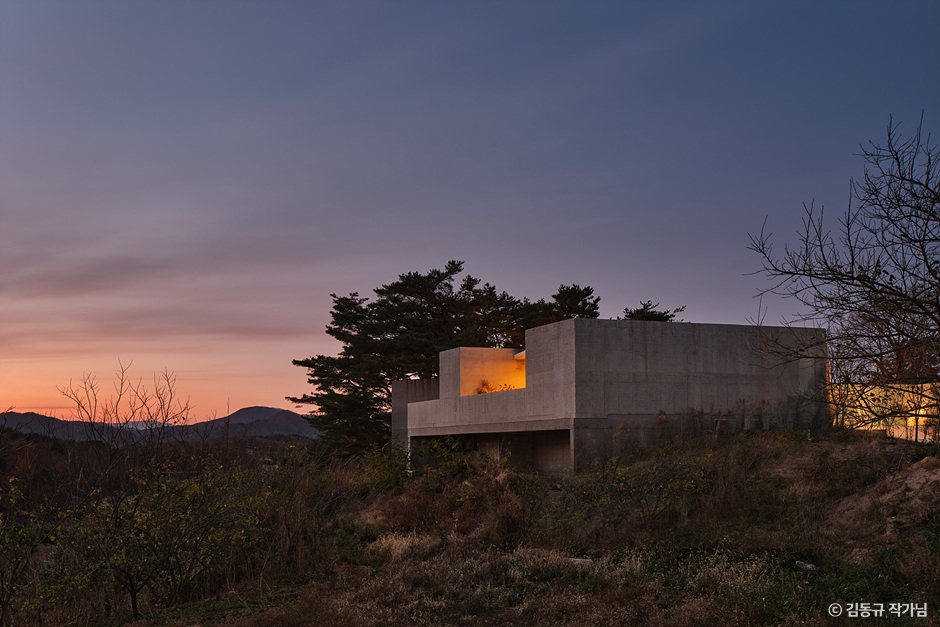
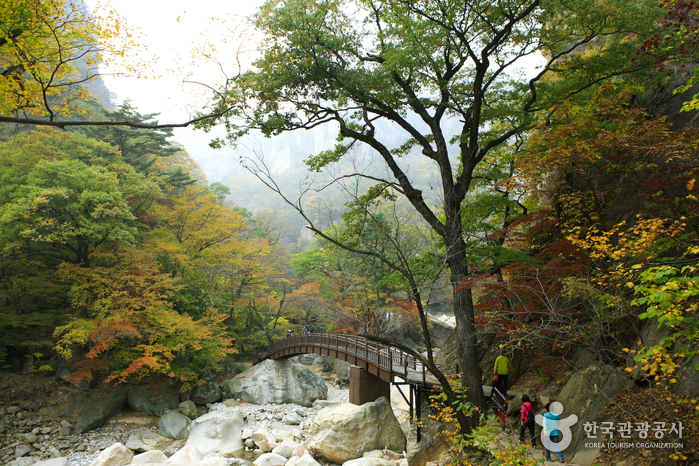
 English
English
 한국어
한국어 日本語
日本語 中文(简体)
中文(简体) Deutsch
Deutsch Français
Français Español
Español Русский
Русский